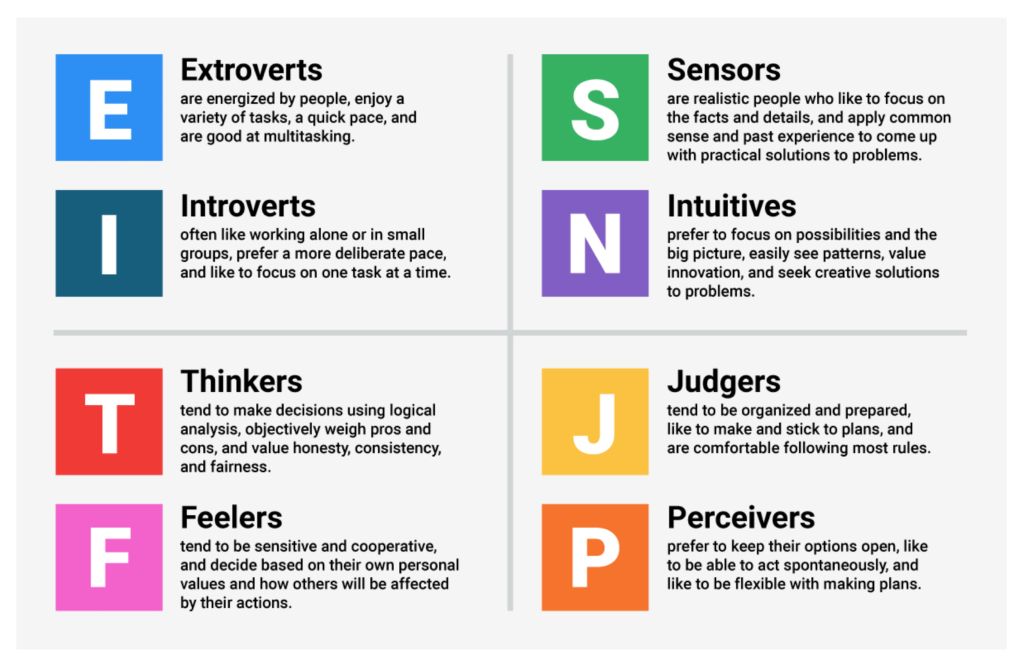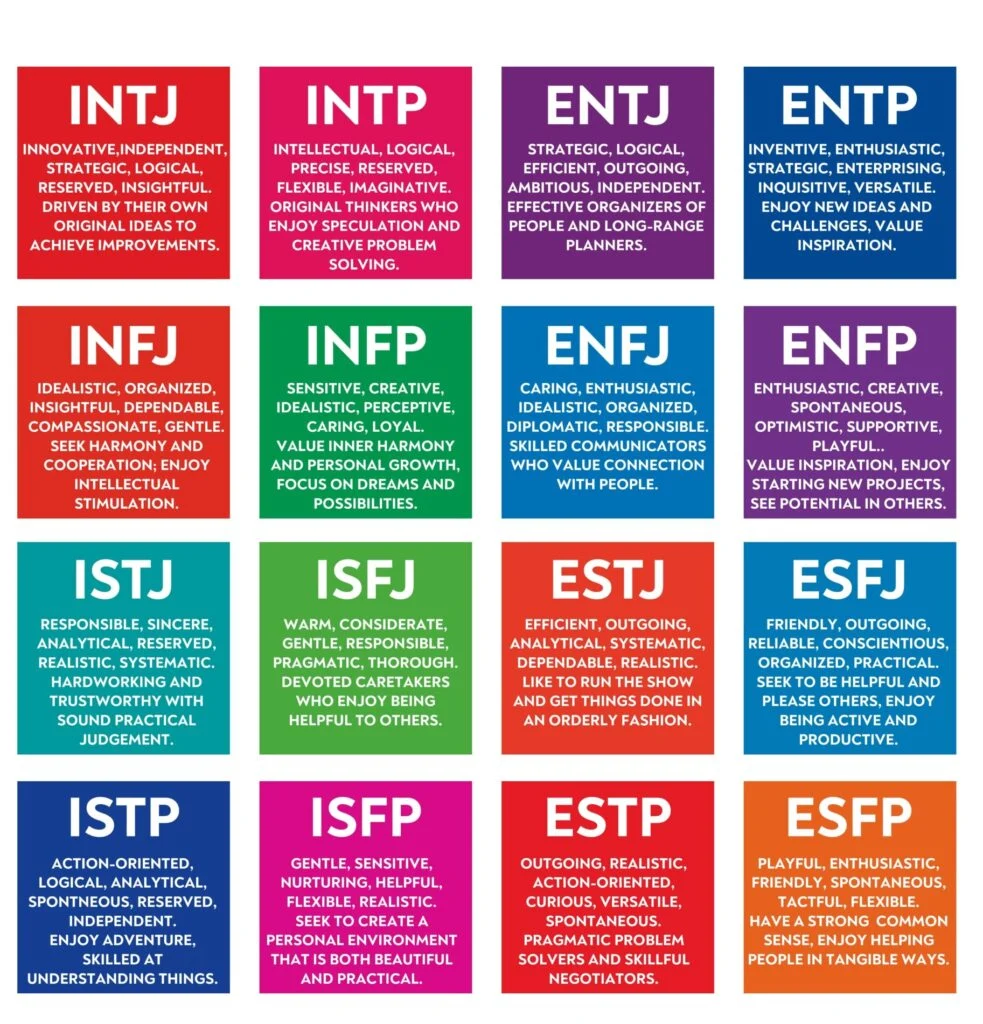Myers-Briggs and Its Relationship to Personal Growth
The Myers-Briggs Type Indicator (MBTI) is one of the most renowned and frequently used personality assessments worldwide. Created by Katharine Cook Briggs and her daughter, Isabel Briggs Myers, it’s rooted in the typological theories proposed by Swiss psychiatrist Carl Gustav Jung. The MBTI serves as a reflection tool, aiming to help individuals comprehend their preferred modes of thinking and behaving. Recognizing these preferences can be pivotal for personal growth.
Origins and Basics of the MBTI
The inception of the MBTI dates back to the early 20th century when Katharine Cook Briggs and Isabel Briggs Myers developed this instrument as a way to facilitate women’s entrance into the workforce during World War II. They hoped understanding personality types would help women identify jobs where they would be most comfortable and effective.
Based on Jung’s theory, the MBTI identifies four dichotomies of human experience:
- Extraversion (E) vs. Introversion (I): This represents the direction in which you focus your attention and gather energy. Extraverts are focused outwardly, energized by external interactions and environments, whereas introverts are inward-focused, deriving energy from their internal world of thoughts and feelings.
- Sensing (S) vs. Intuition (N): This determines how individuals gather information. Sensing types rely on tangible, concrete data and focus on the here and now. Intuitive types look at the bigger picture, focusing on patterns, possibilities, and future implications.
- Thinking (T) vs. Feeling (F): This dichotomy dictates how decisions are made. Thinkers prioritize logical reasoning and objective data, aiming for impartiality. Feeling types, on the other hand, emphasize values and emotional considerations, striving for harmony.
- Judging (J) vs. Perceiving (P): This dimension deals with how individuals prefer to organize their lives. Judging types prefer structure, planning, and decisiveness. In contrast, perceptive types are flexible, spontaneous, and open-ended.

When combined, these dichotomies yield 16 unique personality types, like ISTJ, ENFP, or INTJ, each with its distinct set of characteristics.
MBTI and Personal Growth
Understanding one’s MBTI type can be instrumental for personal development:
- Self-awareness: Recognizing one’s strengths and weaknesses is fundamental for growth. Knowing your MBTI type can shed light on areas where you naturally excel and others where you might face challenges.
- Career Choices: People often find jobs that align with their MBTI type more fulfilling. For instance, an ISTJ might thrive in structured roles like accounting, while an ENFP might be better suited for creative endeavors like marketing or counseling.
- Improved Relationships: By understanding your type and that of others, you can foster better communication, avoid misunderstandings, and appreciate the unique perspectives different types bring to the table.
- Learning and Communication Styles: The way you process information and communicate can largely be influenced by your type. Recognizing this can help in tailoring learning strategies or in adapting your communication to different audiences.
- Stress Management: Each type has specific stress triggers and coping mechanisms. By understanding these, one can mitigate stress more effectively and ensure better mental well-being.
- Personal Development Plans: With insights from the MBTI, individuals can set goals and strategies for personal and professional development that are in harmony with their innate preferences.
Limitations of the MBTI
As with any tool, the MBTI has its critics and limitations:
- Static Typing: The MBTI pegs individuals into one of 16 types, potentially overlooking the fluid nature of personality. In real life, people may exhibit traits from multiple types.
- Reliability: Some research suggests that people might get different types when retaking the test after a certain period.
- Scientific Criticism: While popular, some psychologists criticize the MBTI for lacking empirical support compared to other personality assessments like the Big Five.

Incorporating the MBTI into Personal Growth Journey
To harness the full power of the MBTI for personal growth:
- Seek Feedback: Discuss your type with close friends or colleagues to get insights into how they perceive you. This can offer a more rounded view of your personality.
- Continuous Learning: Delve deeper into MBTI resources, workshops, and literature. The more you understand about your type and its nuances, the better equipped you’ll be for personal growth.
- Integration with Other Tools: Combine insights from the MBTI with other personal development tools and assessments to get a holistic understanding of yourself.
Conclusion
The Myers-Briggs Type Indicator, despite its criticisms, remains a valuable tool in the realm of personal growth. By providing a framework to understand our inherent preferences, it offers pathways to harness strengths, work on areas of improvement, and lead a more fulfilling life. As with any tool, the key lies in its application – using the MBTI judiciously, in conjunction with other resources, can pave the way for profound personal transformation.